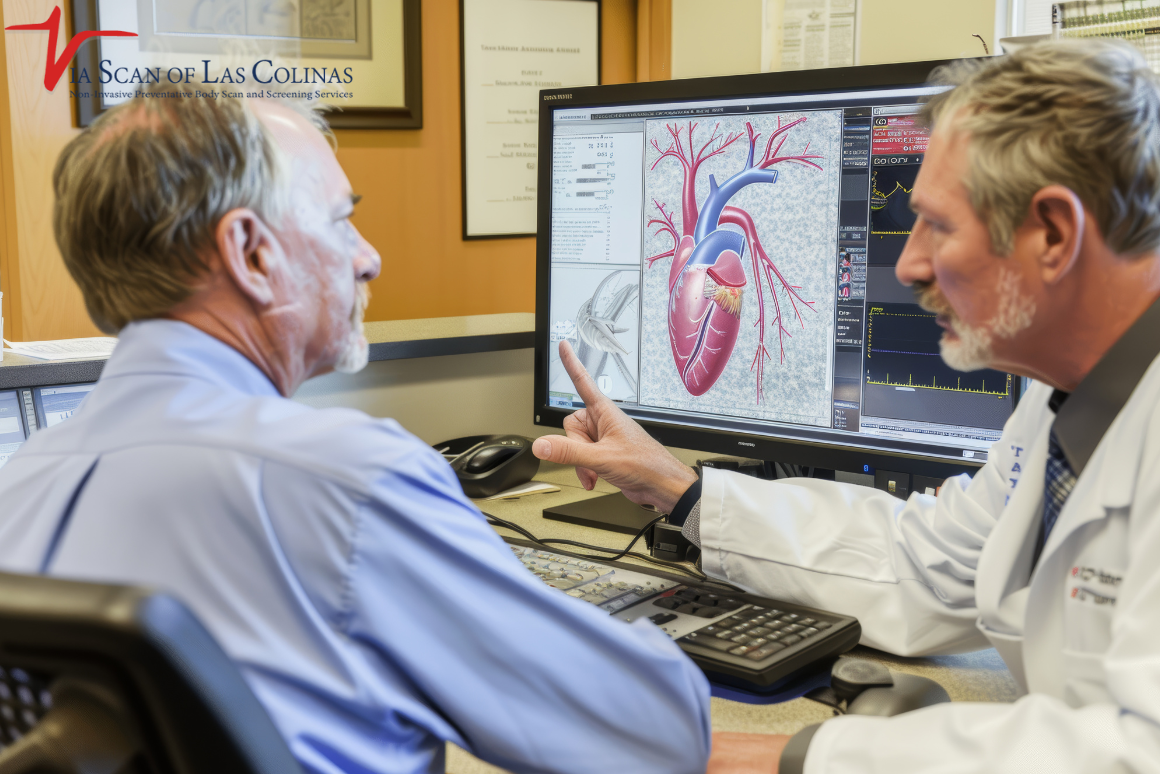Your heart is a house, and there is no electricity that runs it. The blood vessels are similar to the wires transporting power to all the rooms. But what would happen when these wires become blocked or damaged? This is where the doctors of the heart employ special equipment to peek inside and even repair the issue. You may have come across two terms, and maybe you did not understand the meaning of each, so here they are: angiogram and angioplasty. Although they sound similar, both are very different procedures.
Consider an angiogram as a picture of the blood vessels of the heart to see whether there is a problem. Angioplasty is a repair of these blood vessels that are blocked. They both are essential, though they perform different roles. Here at ViaScan, we deal with state-of-the-art diagnostic analysis that can assist in the early diagnosis of heart diseases and vascular conditions to help you and your physician have the most accurate view of what is taking place in your body. It does not matter whether you are interested in finding out more about your heart health or the procedure of a loved one; if you want to know exactly what is going on and why it is important to know this. This blog will help you understand the complex procedures in easy words.
How are the angiogram and angioplasty different?
In a nutshell, the mere difference between an angiogram and an angioplasty is that the former is a test, whereas the latter is a procedure that corrects issues. We may make a comparison between them:
| Feature | Angiogram | Angioplasty |
| What it does | Takes pictures of blood vessels | Opens up blocked arteries |
| Purpose | Diagnostic test (finds problems) | Treatment procedure (fixes problems) |
| Method | Uses dye and imaging | Uses a balloon and sometimes a stent |
| Think of it as | Taking a map of the problem | Doing the actual repair work |
| Result | Shows where blockages are | Restores blood flow |
With the help of a coronary angiogram, the doctor can know where the blockage is in the arteries of the heart with the help of special dye and images. As a medical professional in imaging, I never fail to explain it in the following manner: The angiogram presents us with the map of where the problem lies, and the angioplasty is the direction there. At ViaScan, we provide non-invasive services such as the CT angiogram and CT coronary angiogram, which are non-invasive services in which we do not insert tubes inside your body, allowing early detection of blockages.
In what cases is an angiogram necessary, and what does it help diagnose?
Your doctor advises an angiogram to examine the possibility that something could be obstructing the passage of blood to your heart or other body parts. The key reasons and what it can identify are the following:
When it’s recommended:
- Notable chest pain or discomfort that does not start to clear.
- Unnatural stress test outcomes.
- Dyspnea of undiscovered origin.
- Cardiovascular history in the family.
- Signs of blocked arteries.
What it helps diagnose:
- Heart narrowing or blockage of arteries (coronary artery disease)
- Plague accumulation within blood vessels.
- Stroke (weakness in the walls of arteries)
- Blood clots in vessels
- Other vascular issues in the body.
In my own experience as a professional, early diagnosis is everything in terms of curing treatment. A coronary angiogram is a test that specifically examines the arteries that supply blood to your heart muscle. You can have a CT coronary angiogram, which shows the images of the blood vessels in your heart in great detail, even without subjecting yourself to invasive catheter procedures. We also provide thorough whole-body scanning services that reveal problems throughout your vascular system.
What is the procedure of angioplasty, and how does it work to repair proper blood flow?
An angioplasty is comparable to clearing a pipe to narrow arteries. It is simple, the doctor puts a very thin tube known as a catheter through a small opening in your wrist or in your groin. They insert this tube by X-ray direction into your blood vessels until it gets to the blocked artery in your heart. The cool thing is that next, as a small balloon on the end of the catheter blows up, pushing the plaque all the way against the artery walls and letting the blood flow free once again. Doctors also, in most cases, place a stent (a small mesh tube) that remains in place to ensure that the artery remains open. The whole process normally lasts between one and two hours. As a healthcare professional, I will insist that angioplasty is not done until imaging tests such as a coronary angiogram or a CT angiogram have been done to determine the specific location of the blockage. That is why good diagnostic imaging can be so significant; this will direct the whole process of the treatment and will enable the doctors to make a good choice regarding your treatment.
Choose Our Preventive Heart Scan
Early Detection Saves Lives!
-
- Accurate
- Quick Result
- Affordable

Conclusion
It is also true that knowledge is power, particularly power regarding your health. Knowing the difference between the angiogram (test) and angioplasty (treatment) will help you make better decisions related to questions and will enable you to ask better questions to improve your decision-making. The awareness of the availability of sophisticated imaging techniques, such as the CT angiogram and CT coronary angiogram, provides you with the means of early diagnosis that the earlier generations did not have.
At ViaScan, we consider all people to be entitled to the best diagnostic imaging. You may have symptoms, you might have risk factors of having heart disease, or you just need to have some peace of mind with your cardiovascular health, and whatever the case is, our team is there to give you the answers you need.


